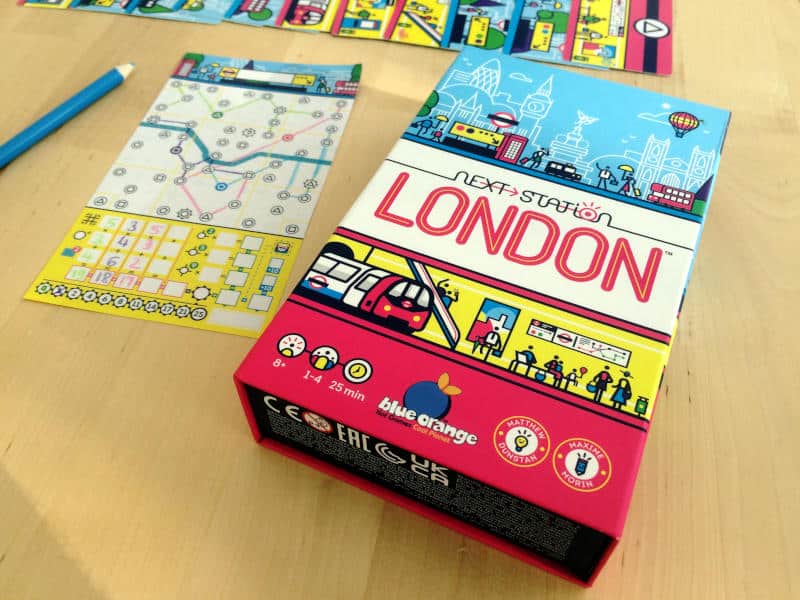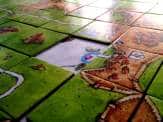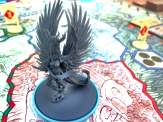Based on a suggestion from the wonderful Bez from Stuff by Bez, I want to look at how designers can sometimes be known for specific styles of board games. That can be useful for people looking for certain types of games, but it also means that the designers can end up being pigeonholed, which can have a negative impact on their professional future in our hobby.
Listen to the Audio Version
Intro Music: Bomber (Sting) by Riot (https://www.
Music I use: Bensound
License code: 3XQRVHFZYGG6KHGN
What We Like
It should come as no surprise that we like certain games over others. The reasons for liking them can be various. For me, it’s a mix of immersive illustrations, clever mechanisms and a certain level of complexity. In fact, I’m a very visual person and games draw me in through their visual presentation. Artwork is top of the list for me. So it’s no surprise that I learned the names of the illustrators of my favourite games pretty early on. Some artists have a very unique style. You just need to look at the cover art to know who the illustrator is.
After a while in the hobby, I realized that there were certain publishers whose games I usually liked. I would keep an eye on their latest releases and more often than not, would buy their games with very little research. I trusted the publisher to release certain types of games that appealed to me. Sometimes I was disappointed, but on the whole, it worked for me.
It’s really only in the last couple of years that I worked out the reason why a certain publisher’s games appeal to me. It’s because they were working with the same designer for most of their games. By the way, some publishers would often employ the same illustrator for their games. My favourite example is Red Raven Games. Ryan Laukat designs and illustrates all the games, while also owning the company. So it’s no surprise that Red Raven‘s games feature quite heavily in my and my friend’s collections.
Anyway, when I realized that it’s the designers who are ultimately responsible for whether I liked a game, I focussed more on them.
Favourite Designers
So while I still look at the publisher and illustrator of a game, my main focus is on the designer. It goes even further than that. I have learned that certain designers create games that are a good fit for certain groups of people.
For example, I can be pretty confident that Matthew Dunstan‘s games will appeal to me, our neighbours and my wider family. Many of his games are really simple in their design, with not a lot of rules overhead. Yet, they still create a deep enough gaming experience that is suitable to a wide range of tastes. He has released games through many different publishers, often in collaboration with another designer. So whenever I need a game that appeals to pretty much anyone, I look for one of his games. The publisher and illustrator are secondary.
I also have to mention Rory Muldoon, who is an amazing board game and graphic designer all at the same time. The games that he and Matthew published together will appeal to people who like very thematic and engrossing roll-and-write games. Even the most recent game published under their Postmark Games label fits the bill, even though neither of them designed it.
Daniel Newman is another example. While he has designed a wide variety of games, more recently he published amazing and rather different trick-taking games. I literally constantly check what games he has lined up next. I know they’re all going to be pretty much instant buys for me.

Pigeonholing
Of course, it’s great that I can be confident buying games from certain designers. At the same time, it means I pigeonhole these designers. That can be an issue for a number of reasons. I want to list some of these and would be curious to know from board game designers, if any of them apply to them and how much of an issue they are for them.
I think that a designer known for making specific types of games can be hugely successful, if the games are hit and sell well. The designer might want to lean into these types of games and create more of them to capitalize on their success. I suppose that’s a good thing.
However, creating the same types of games over and over again also means that designers might limit themselves. Not pushing boundaries and trying new things can lead to stagnation. I think board game designers, like all creative people, need to explore their abilities and their imagination. They need to challenge themselves and discover what’s possible and learn new things along the way.
There is also a risk in simply following the same winning formula. Eventually, people will get bored and the market will become saturated. After all, certain types of games will appeal to certain types of people. Specific games will have a specific audience which remains mostly unchanged. Commercially, that’s a risky strategy. At some point, the lucky streak will end.
I, as a consumer of board games, love it when a designer releases the same sort of games. I know that when my taste or that of my games group eventually changes, I can find a new designer. It’s a lot harder for a designer known for specific types of games to find a new audience.
What About You?
As I mentioned, I would love to hear from board game designers. Do you think you’re known for certain types of games? Do you enjoy creating games that follow a certain pattern? Maybe you strive to create lots of different types of games. Or maybe you relish the challenge of making different types of games. Please share your real-life experiences and thoughts in the comments below. I would love to hear from you.
Keeping the blog running takes time and resources. So if you can chip in, that would be amazing.
Useful Links
- Stuff by Bez: http://www.
stuffbybez. com/ - Red Raven Games: https://www.
redravengames. com/ - Matthew Dunstan: https://www.
postmarkgames. com/ about-3 - Rory Muldoon: https://www.
postmarkgames. com/ about-3 - Daniel Newman: https://www.
newmillindustries. com/ about
2 Comments
What are you thoughts?
Add your thoughts on the topic to the form below and join the conversation.
Audio Version
Intro Music: Bomber (Sting) by Riot (https://www.
Music I use: Bensound
License code: 3XQRVHFZYGG6KHGN
Playlist
These are the songs I listened to while I was writing this topic discussion article:







Great topic and definitely something that happens often.
Here’s our perspective for our game design philosophy.
For Will, he likes to take mechanisms that he doesn’t like and work them into something he does like.
Project Dreamscape was a result of his frustration that set collection games can be boring in that what you collect just sits there and does nothing for you during the game. So he shifted that to card sequencing where you want like types next to each other, but each card has an ability that is activated when its the top card. And there are a lot of manipulation abilities.
Oaxaca was his frustration that a lot of dice manipulation games use the numbers of dice and probability of getting 2-12, which makes it very non-thematic. He went with symbols and different ways to manipulate dice than the numbers.
He has a lot of other game ideas that we’ve worked on over the years that are similar processes. The only consistency between any of the games is we love combos and engine building, as we are hugely influenced by our early days with Magic the Gathering. But how that exists in each game is different. So it will be hard for anyone to really thread them together.
As for me, I didn’t come up with my own focus until Warm & Fuzzy Feelings. Most of our games are Will’s mechanics first. But this one was all my genesis and it came theme first with my desire to have positive player interactions. I knew that I wanted people to give to each other, but Will helped me develop the mechanisms, as that’s not my strong suit.
So now as we develop games, I do push Will to integrate positive player interactions. He’s seen the benefit of it, as it keeps the game moving forward towards the end, whereas negative player interactions often slow the game down.
To wrap it up, our design goals/focus are:
1. working mechanisms into a form that we enjoy
2. positive player interactions
3. probably some combos and/or engine building mechanisms
Hello Sarah. Thank you so much for your detailed comment. It’s so great to hear how you, as designers, approach your work.